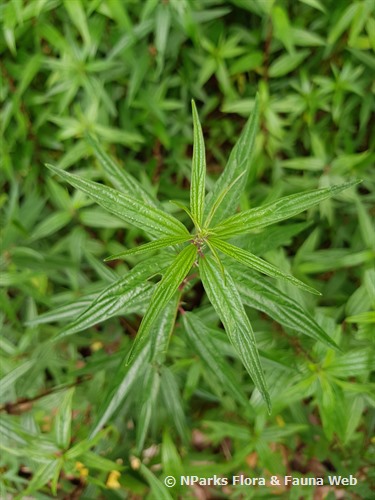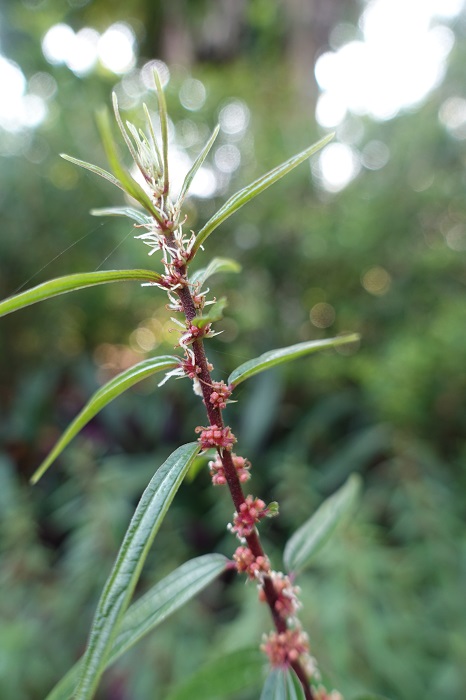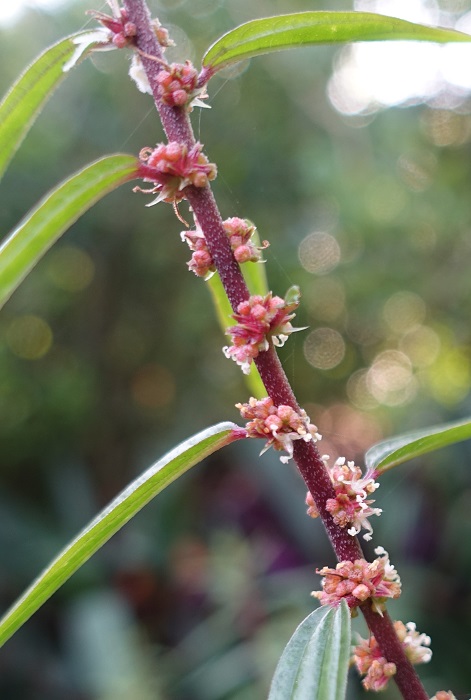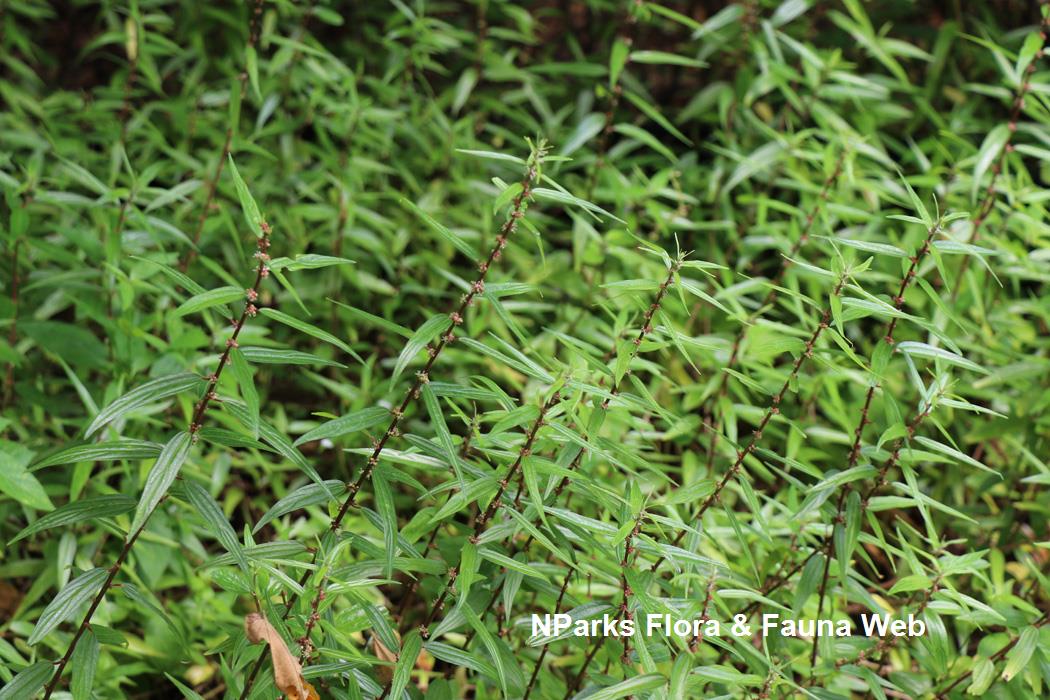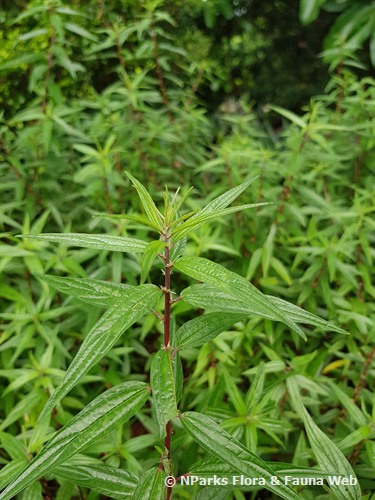
Name
Classifications and Characteristics
| Plant Division | Angiosperms (Flowering Seed Plants) |
|---|---|
| Plant Growth Form | Shrub |
| Lifespan (in Singapore) | Perennial |
| Mode of Nutrition | Autotrophic |
Biogeography
| Native Habitat | Terrestrial |
|---|
Description and Ethnobotany
| Growth Form | It is a herb with usually prostrate growth habit. |
|---|---|
| Foliage | Leaves are arranged oppositely along the stems, stipules ovate, petiole of about 1 - 4 mm long. Leaf blades are narrowly lanceolate, measuring up to 10 long and 2.8 cm wide, having thinly papery texture. The upper surface have sparsely stiff bristles or almost smooth along the veins, while under surface is sparsely pubescent (hairy). Apex is acute to acuminate while base is subcordate to rounded. |
| Stems | Stems are four-angled and pubescent (hairy). |
| Flowers | Plants can be monoecious (both male and female flowers on the same plant) or dioecious (male and female flowers on different parents). Flowers are yellowish, arranged at the leaf axils. |
| Fruit | Fruit is achene, white to black, ovoid in shape. |
| Habitat | Found in weedy areas, stream banks, weedy patches, thickets, and rice fields. |
| Ethnobotanical Uses | Medicinal: It is believed to treat boils and bone dislocations or fractures. |
Plant Care and Propagation
| Light Preference | Full Sun |
|---|---|
| Water Preference | Moderate Water |
| Rootzone Tolerance | Moist Soils, Well-Drained Soils |
Foliar
| Foliage Retention | Evergreen |
|---|---|
| Mature Foliage Colour(s) | Green |
| Mature Foliage Texture(s) | Hairy / Hirsute |
| Prominent Young Flush Colour(s) | Green |
| Foliar Modification | Stipule |
| Foliar Type | Simple / Unifoliate |
| Foliar Arrangement Along Stem | Opposite |
| Foliar Shape(s) | Non-Palm Foliage |
| Foliar Venation | Parallel |
| Foliar Margin | Entire |
| Foliar Apex - Tip | Acute, Acuminate |
| Foliar Base | Rounded / Obtuse |
Floral (Angiosperm)
| Flower & Plant Sexuality | Unisexual Flowers |
| Flower Colour(s) | Yellow / Golden |
|---|---|
| Flower Grouping | Cluster / Inflorescence |
| Flower Location | Axillary |
| Flowering Period | Free-Flowering |
Image Repository
Others
| Master ID | 30542 |
|---|---|
| Species ID | 4851 |
| Flora Disclaimer | The information in this website has been compiled from reliable sources, such as reference works on medicinal plants. It is not a substitute for medical advice or treatment and NParks does not purport to provide any medical advice. Readers should always consult his/her physician before using or consuming a plant for medicinal purposes. |

